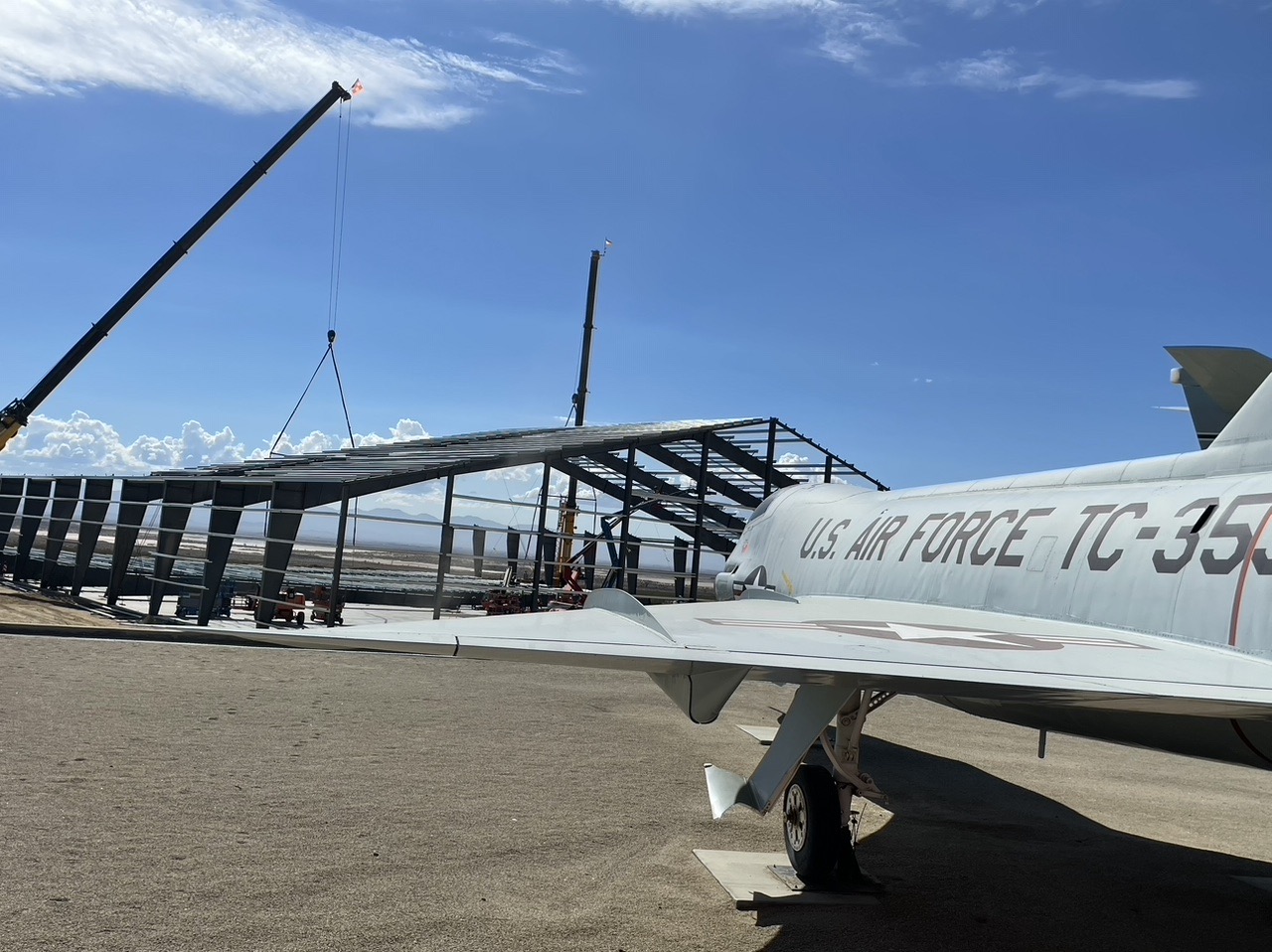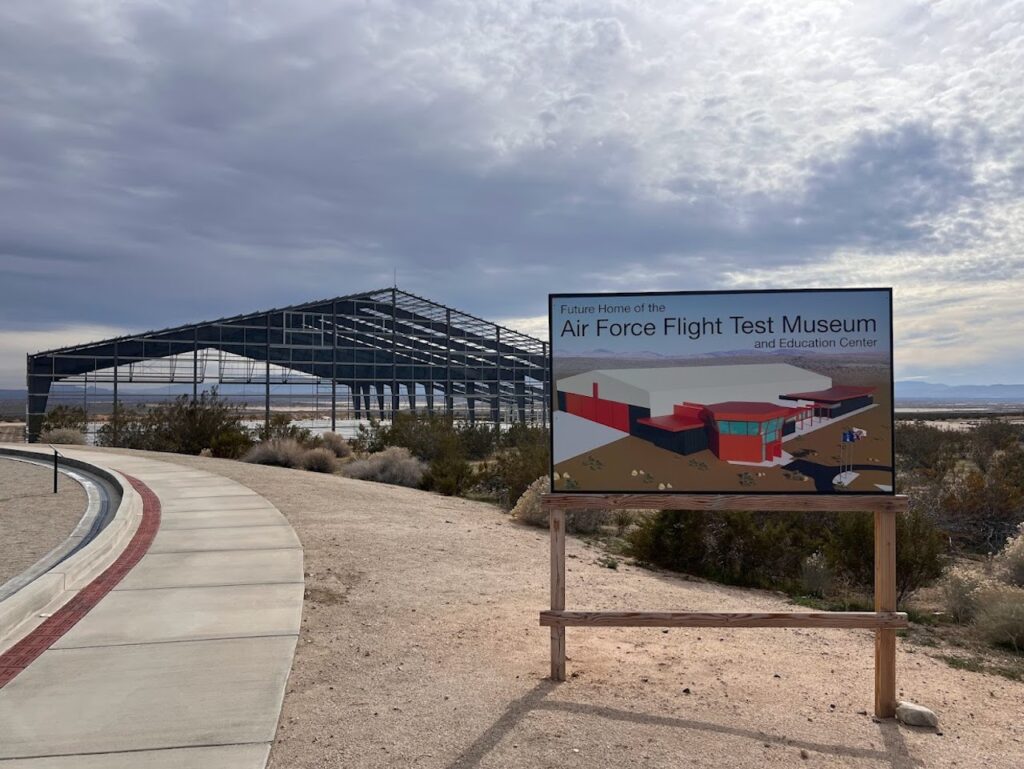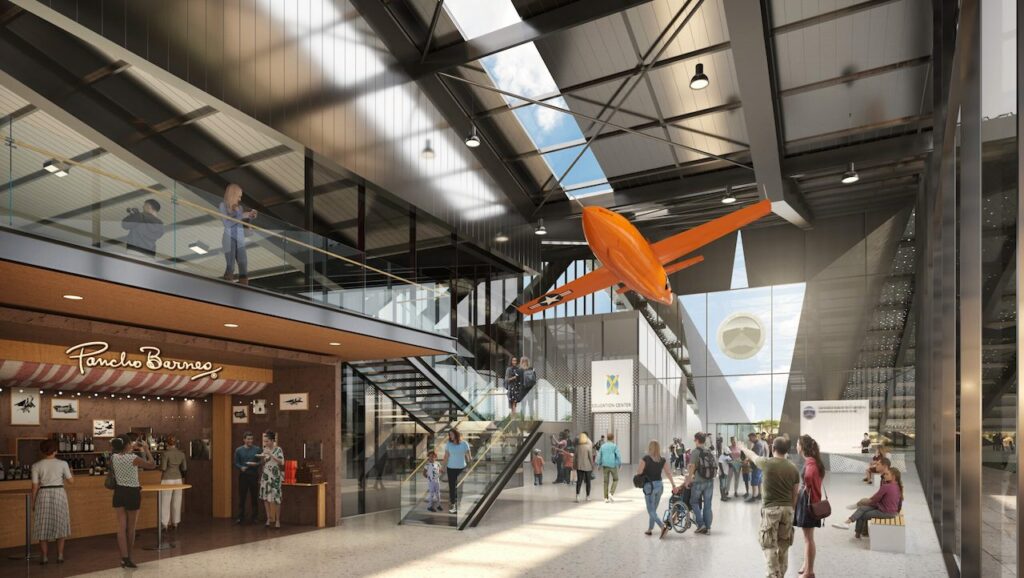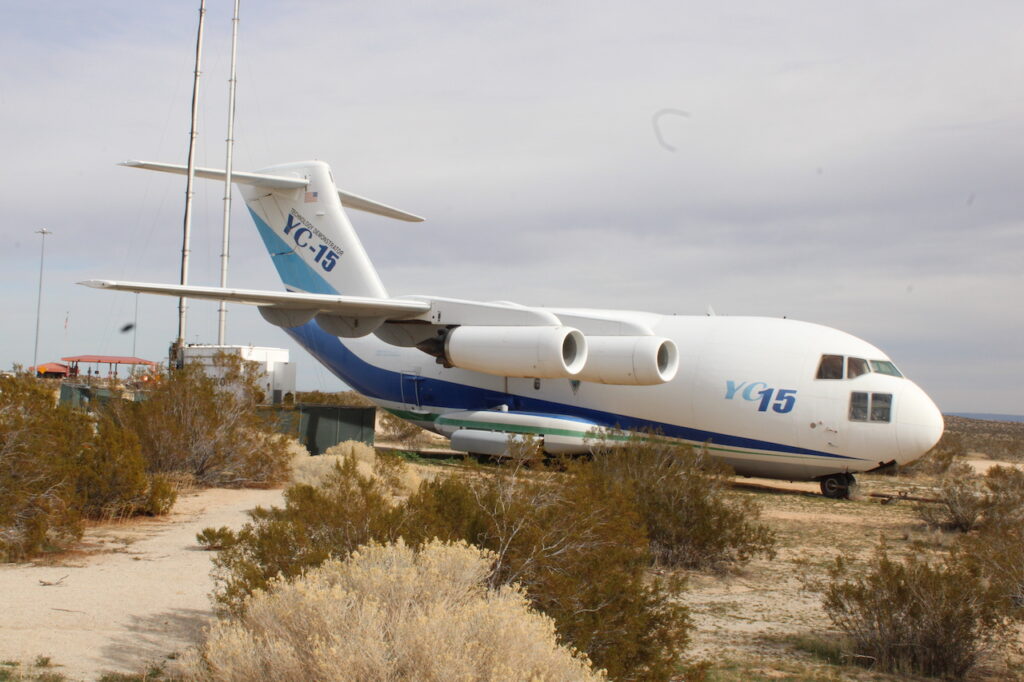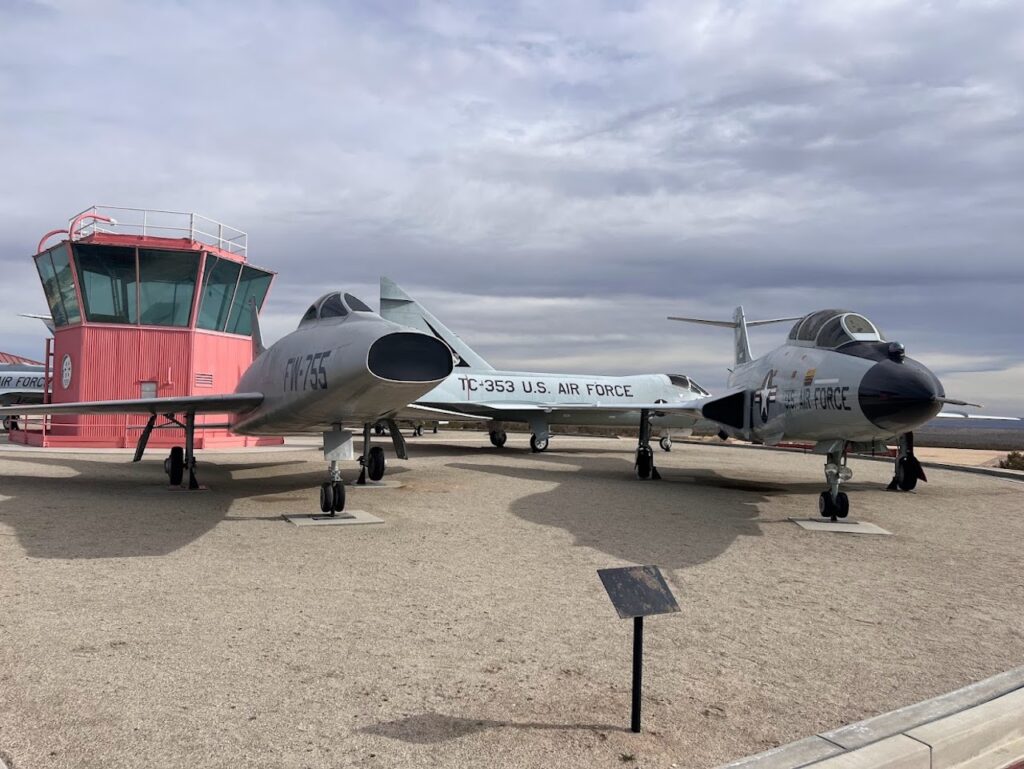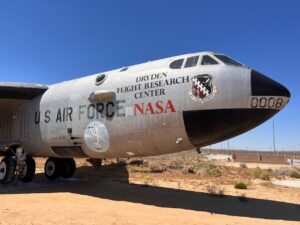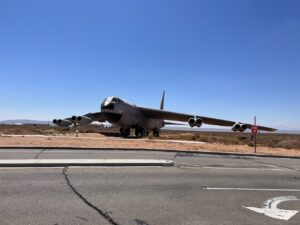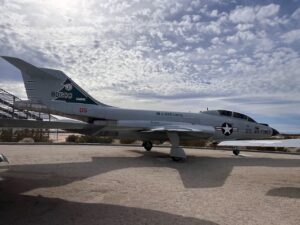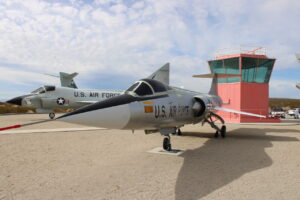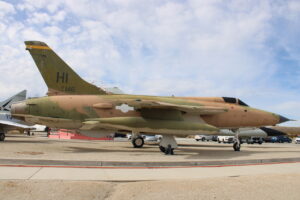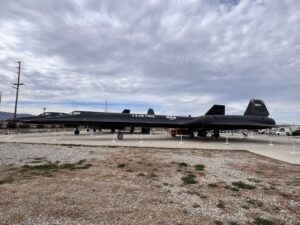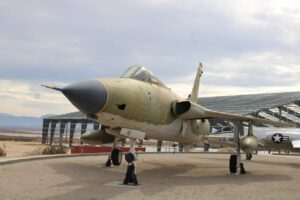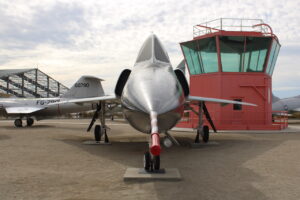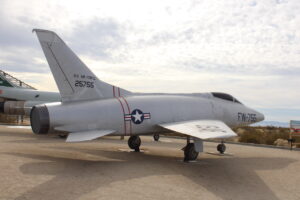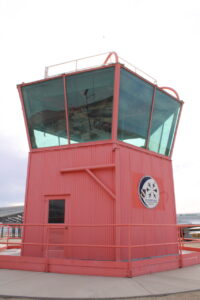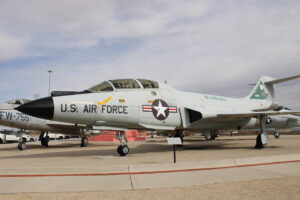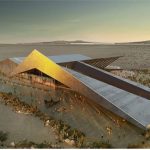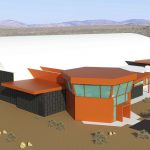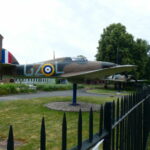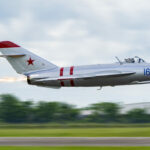By Adam Estes
In several articles of ours over the years here at Vintage Aviation News (see related posts below), we have covered the efforts of the Air Force Flight Test Museum at Edwards Air Force Base in California’s Antelope Valley. For over 75 years, the dry lake beds and high desert skies have seen a host of the most advanced designs in aerospace history and some of the bravest men to sit inside a cockpit push the boundaries of flight and the endurance of both man and machine. Now, a new location for this museum is taking space under those same skies that seeks to preserve the legacy of the test pilots and their planes while making their collections more accessible to the public than ever before.
With its roots in the establishment of the Flight Test Museum Foundation by Robert Cardenas, Chuck Yeager, Carol Odgers, and William “Pete” Knight in 1983, the Air Force Flight Test Museum has always sought to tell the story of flight test research at one of the epicenters of that ongoing project. While the museum had to raise funds funds for well over a decade to finally open at Edwards AFB in July 2000, increases to security to military bases across the country in the wake of 9/11 have forever affected the accessibility to on-base museums, and the AFFTM was no different. Today, visitors can only visit the museum if they have been granted access to the base through a vetting process, as it lies five miles past the West Gate, within Edwards AFB. The small size of the museum building also means that much of the museum’s aircraft have to be displayed outdoors, exposed year round to the constant and drastic changes in temperature from scorching heat during the day to cold nights. All of this has resulted in the current effort to move the museum to be more accessible to the public, yet remain within close proximity to Edwards Air Force Base.
The new location for the Air Force Flight Test Museum will be adjacent to the pre-existing Century Circle, just five miles down Rosamond Boulevard from the existing museum. Opened in 2007, this monument is home to a representative example of each of the Century Series of U.S. fighter aircraft accepted into operational service (F-100, F-101, F-102, F-104, F-105, and F-106). Additionally, the sole remaining McDonnell-Douglas YC-15, a prototype STOL-capable tactical transport that led to the development of the C-17 Globemaster III sits within view of Century Circle, which was chosen as the new location for the museum because although it sits on Air Force land, it is just outside the West Gate of Edwards Air Force Base, and thus it will be far more accessible for all visitors from near and far to visit.
At the time of writing, the foundation for the first 60,000 square foot hangar has been laid, with the framework for the walls and ceilings in place. This is to be the home of some of the museum’s most historic and rare aircraft, from the Northrop X-4 Bantam to the Lockheed Martin YF-22. Once the panels for the ceiling and walls are permanently installed and the building’s interior set in place, efforts will get underway to move some of the aircraft down Rosamond Blvd. After completing Hangar 1, the AFFTM will construct both an adjoining 60,000 square foot open-sided hangar, where larger artifacts, including space and rocket displays will be housed, and a 15,000 square foot structure to house museum’s Gift Shop, STEM Education Center to provide onsite learning for local students and a venue for the Bob Hoover Library and the archives of the Society of Experimental Test Pilots. The museum will also have a branded bar to pay tribute to the legacy of Florence Lowe “Pancho” Barnes, the colorful character who flew with the likes of Amelia Earhart, established the first union for motion picture stunt pilots, and owned the Happy Bottom Riding Club, a favorite watering hole for test pilots like Chuck Yeager and Bob Hoover during the late 1940s and early 1950s. The remains of the original Happy Bottom Riding Club are also just two miles from the new museum site.
Even with two 60,000 square foot hangars, not all of the museum’s aircraft can be accommodated inside, and thus those that will remain outdoors will be towed onto specially-built pads with shade covers to better protect the planes and their paint schemes from the desert sun. Completion of all of the construction phases is expected to be finalized by 2025.
Besides the main location of the Air Force Flight Test Museum, the museum also maintains an annex at Palmdale Regional Airport called Blackbird Airpark. This airpark is home to the museum’s Lockheed A-12, SR-71 Blackbird, U-2, and D-21 surveillance drone. Blackbird Airpark is also adjacent to another attraction that is maintained by the City of Palmdale itself, the Joe Davies Heritage Airpark, which is home to several other aircraft, including one of the two Shuttle Carrier Aircraft, Boeing 747 NASA 911. The museum also retains custody of the former NASA-operated Boeing NB-52A 52-008 known as Balls 8, which was used as a mothership in the X-15, X-24, and X-43 programs among others over a nearly 50-year career, and now sits on display near the North Gate of Edwards just off State Highway 58 between Mojave and Boron, California.
[wbn_ads_google_three]







